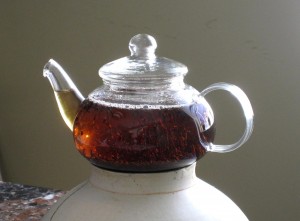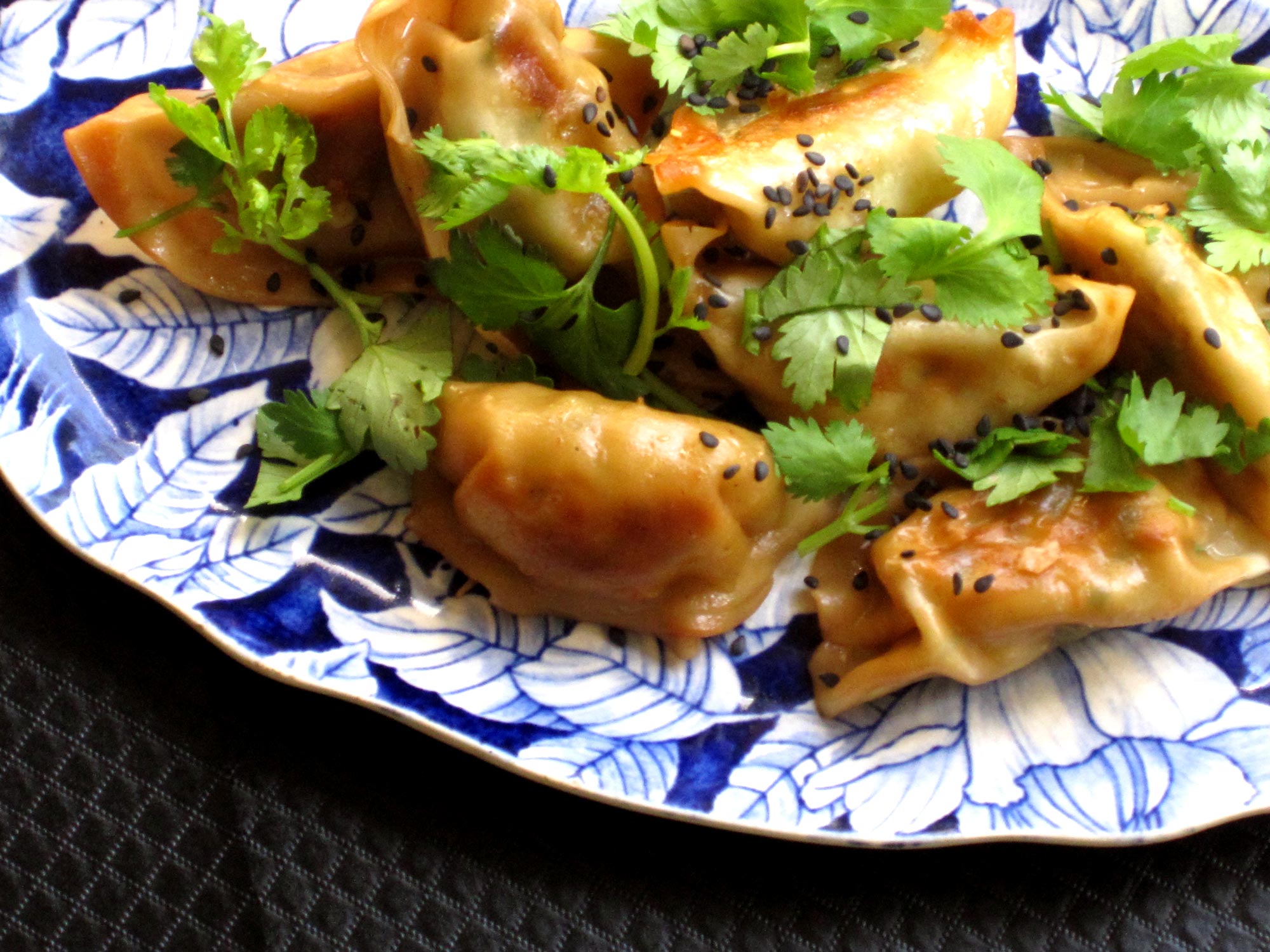Much has been made lately of the culinary value of tea. I have cooked Lapsang Souchong chicken with a degree of success, Matcha shortbread was melt-in-your-mouth delicious and now I’m experimenting with Keemun, also known as Qimen. This is my favourite black tea. Honoured in the tea world as “The Burgundy of Teas”, its smokey flavour is less pronounced than Lapsang and it has a lingering malty depth that ends on a rich sweet note. It was developed in AnHui province in 1875 and has become a favourite in England, Europe and is gaining popularity in North America. It goes with anything, so why not use it to simmer dumplings?

I began by sautéing 20 frozen Korean vegetable dumplings in 2 tablespoons of grapeseed oil on medium heat for several minutes or until the dumplings were a light golden colour.

I placed 5g. of Qimen in a 12 oz teapot and filled with boiling water. After steeping for 1 and ½ mins. I poured the tea over the dumplings in the sauté pan. While adjusting the camera etc., I left the dumplings in the pan for several minutes too long. I was able to rescue more than half, but I caution that at this stage, you must observe the dumplings lest they become too saturated with tea and fall apart. It would be best to simmer at Med/Low heat in the tea for no more than 2 or 3 minutes.

Carefully remove the dumplings. To prevent the dumplings from sticking to the platter, I coated it with a few drops of toasted sesame oil before arranging them. Garnish with chopped cilantro and black sesame seeds. When I normally make dumplings, I drizzle toasted sesame oil and rice vinegar on top, but this time I decided to give the Keemun a chance to represent itself without the interference of other strong flavours.
The dumplings were tasty, but then, these Korean dumplings are always tasty. The general feedback was that the flavour of Keemun was not noticed. If I were to attempt this again I would use a stronger infusion of tea. The tea gave the dumplings a rich colour, but the taste of Keemun was all but eliminated by the vegetable flavours. It is fun to experiment and we will continue to keep our readers updated on our trials and triumphs!



